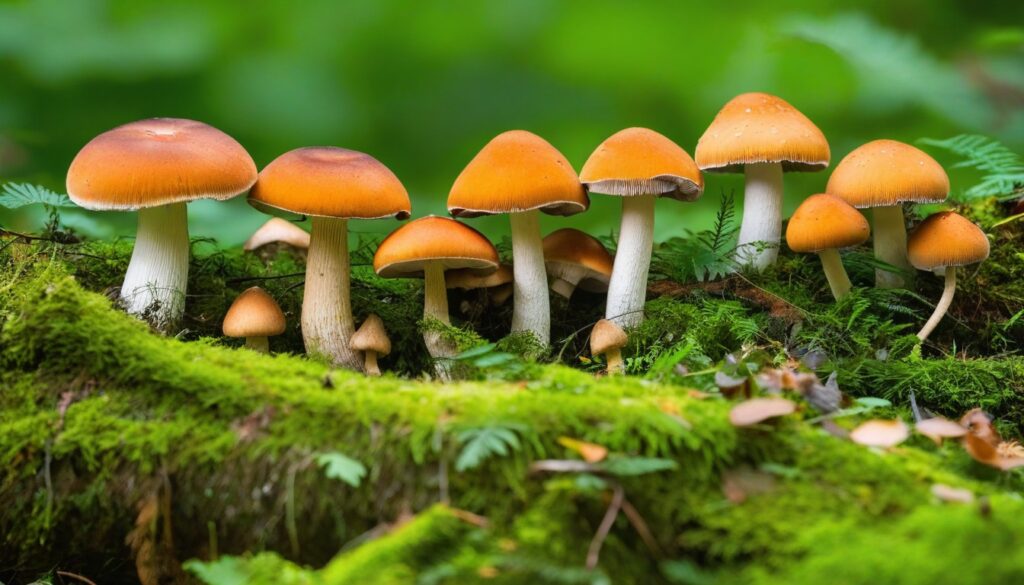Welcome to our Edible Mushrooms in Ohio: Foraging Guide! If you’re an adventurous foodie looking for a new culinary experience, mushroom foraging in Ohio is a great place to start. Ohio is home to a diverse range of mushroom species that offer unique flavors and textures. However, it’s important to stay safe and informed before heading out to forage. In this guide, we’ll provide you with all the necessary information to start your foraging adventure, from proper identification techniques to sustainable foraging practices.
Key Takeaways:
- Ohio is a great place for mushroom foragers to explore.
- Proper identification techniques are crucial for safe foraging.
- Sustainable foraging practices help protect natural ecosystems.
- Ohio offers a variety of delicious mushroom recipes to try.
- Additional resources can help enhance mushroom identification skills.
Why Forage for Mushrooms in Ohio?
If you’re an avid forager or if you’re seeking a new adventure, Ohio is the perfect place to forage for mushrooms. With its diverse range of ecosystems, the state offers a variety of habitats where edible mushrooms thrive. From the fertile soil of the Ohio River Valley to the lush forests of the Appalachian region, you’re bound to find a variety of mushrooms that suit your taste buds.
Foraging for mushrooms is a fun and rewarding activity that allows you to connect with nature and enjoy the fruits of your labor. It’s also a great way to explore the beauty of Ohio’s natural landscape while indulging in its culinary delights. Whether you’re a seasoned forager or a beginner, Ohio’s abundant range of edible mushrooms provides an opportunity for everyone to participate in this exciting and fulfilling activity.
So, if you want to forage for some of the most delicious and nutritious mushrooms in the country, come to Ohio and explore its rich foraging grounds.
Safety Precautions for Mushroom Foraging
Foraging for wild mushrooms can be a fun and rewarding experience, but it is essential to take safety precautions to avoid any potential risks. Here are some basic safety guidelines to keep in mind when mushroom foraging in Ohio:
- Always bring a field guide or an expert forager: It is crucial to have accurate identification before consuming any mushroom you find.
- Wear protective clothing: Long trousers, long-sleeved shirts, and gloves can help protect your skin while foraging.
- Stick to the trail: Avoid stepping off the trail to minimize the risk of encountering hazardous plants or insects.
- Leave no trace: Be responsible and respectful when foraging, leaving the flora and fauna undisturbed and taking all trash with you.
- Don’t eat any mushroom unless you are 100 percent sure of its identification: Some mushrooms may look similar to edible ones but can be poisonous, so always err on the side of caution.
Essential Tools for Mushroom Foraging
Having the right tools can make foraging more efficient and safe. Here are some essential tools you should bring when mushroom foraging in Ohio:
Tool | Purpose |
|---|---|
Knife | Used to cut the mushroom stem and easily identify which mushroom species it is |
Basket or Cloth Bag | Ideal materials for carrying mushrooms, allowing them to breathe and prevent them from getting squished or damaged |
Hand Trowel | Useful for digging up mushrooms with underground stems, such as chanterelles and truffles |
Flashlight or Headlamp | Allows you to forage during low-light conditions, such as dawn or dusk, and illuminates dark areas where mushrooms grow |
By following these safety precautions and bringing the right equipment, you can enjoy a fulfilling and safe mushroom foraging experience in Ohio!
Common Edible Mushrooms in Ohio
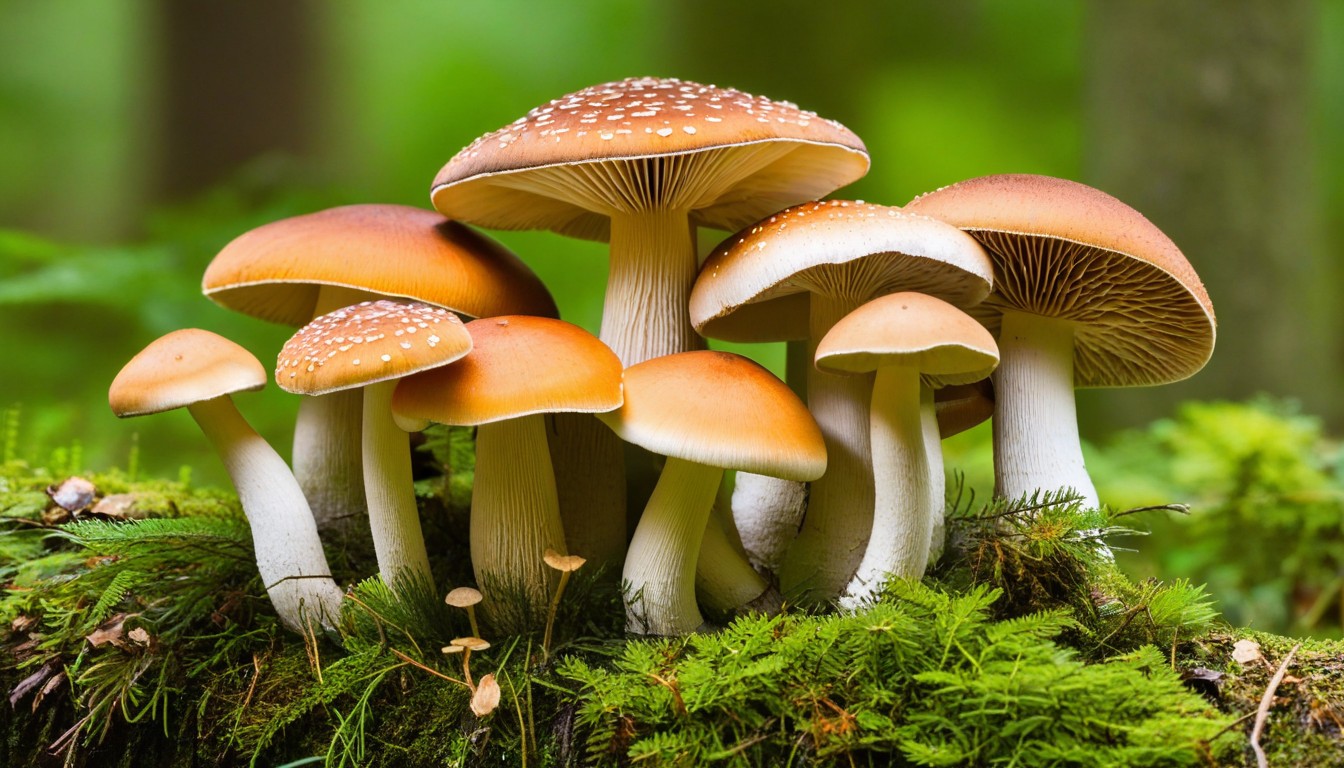
Ohio is a haven for mushroom foragers, as it is home to numerous edible mushroom species. Below are some of the most commonly found edible mushrooms in Ohio, along with their identification features, preferred habitats, and culinary uses:
Mushroom Name | Identification Features | Preferred Habitat | Culinary Uses |
|---|---|---|---|
Morel | Distinctive honeycomb cap | Damp soil near trees in early spring | Sautéed, fried, or used in soups and sauces |
Chicken of the Woods | Bright yellow and orange shelf-like caps | Growing on dead or dying trees in late summer or fall | Cooked in butter or used as a vegetarian substitute for chicken |
Chanterelle | Wavy, funnel-shaped cap with ridges instead of gills | Growing on damp woodland floors in late summer or fall | Sautéed or used in sauces and soups |
Black Trumpet | Thin, wavy cap with trumpet-like shape | Growing on rotting wood in late summer or fall | Sautéed or used in sauces and dishes where its deep flavor can shine |
Hedgehog | Spiky undersides of the cap instead of gills | Growing under deciduous trees in late summer or fall | Sautéed or used in soups and stews as a flavorful meat substitute |
It’s important to remember that identifying mushrooms correctly is crucial for safe and enjoyable foraging. Make sure to carefully examine each mushroom’s features, and if you have any doubts about a particular species, leave it alone.
Where to Find Edible Mushrooms in Ohio
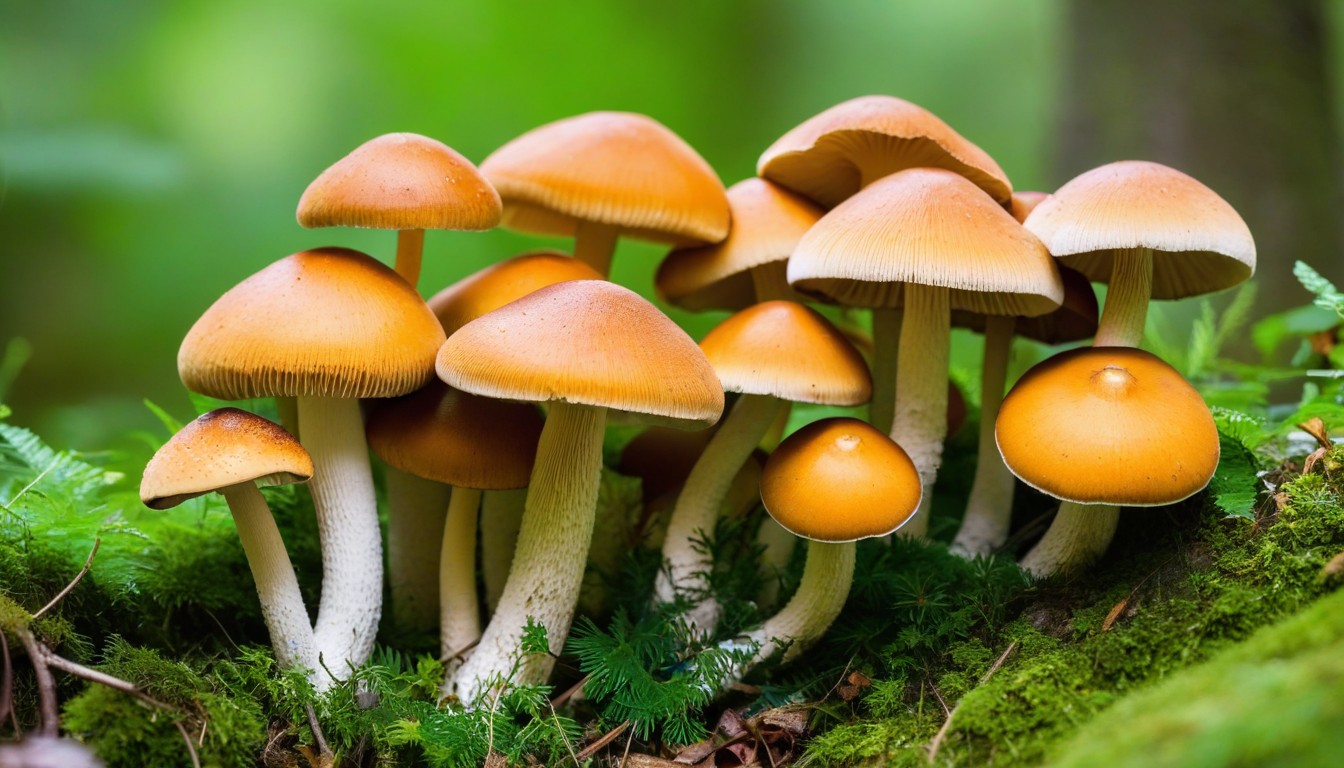
Ohio is home to a diverse range of habitats, making it a prime location for mushroom foraging. Whether you’re looking for wooded areas or open fields, there are plenty of locations to explore. Here are some top spots to find edible mushrooms in Ohio:
Location | Best Time to Forage | Common Mushroom Species Found |
|---|---|---|
Cuyahoga Valley National Park | Spring to Fall | Morels, Chanterelles, Chicken of the Woods |
Maumee State Forest | Summer to Fall | Chanterelles, Black Trumpets, Hen of the Woods |
East Fork State Park | Summer to Fall | Morels, Chicken of the Woods, Honey Mushrooms |
Cedar Bog Nature Preserve | Summer to Fall | Chanterelles, Hen of the Woods, Puffballs |
Wayne National Forest | Summer to Fall | Chanterelles, Hen of the Woods, Black Trumpets |
It’s important to note that foraging on private property without permission is illegal, so be sure to obtain the proper permits and follow park guidelines when foraging in public areas.
Keep in mind that mushroom growth and availability can vary depending on weather conditions, so it’s always a good idea to check up-to-date foraging reports or consult with experienced foragers before planning your trip.
With these tips and locations in mind, you’ll be ready to explore the rich world of edible mushrooms that Ohio has to offer.
The Art of Mushroom Identification
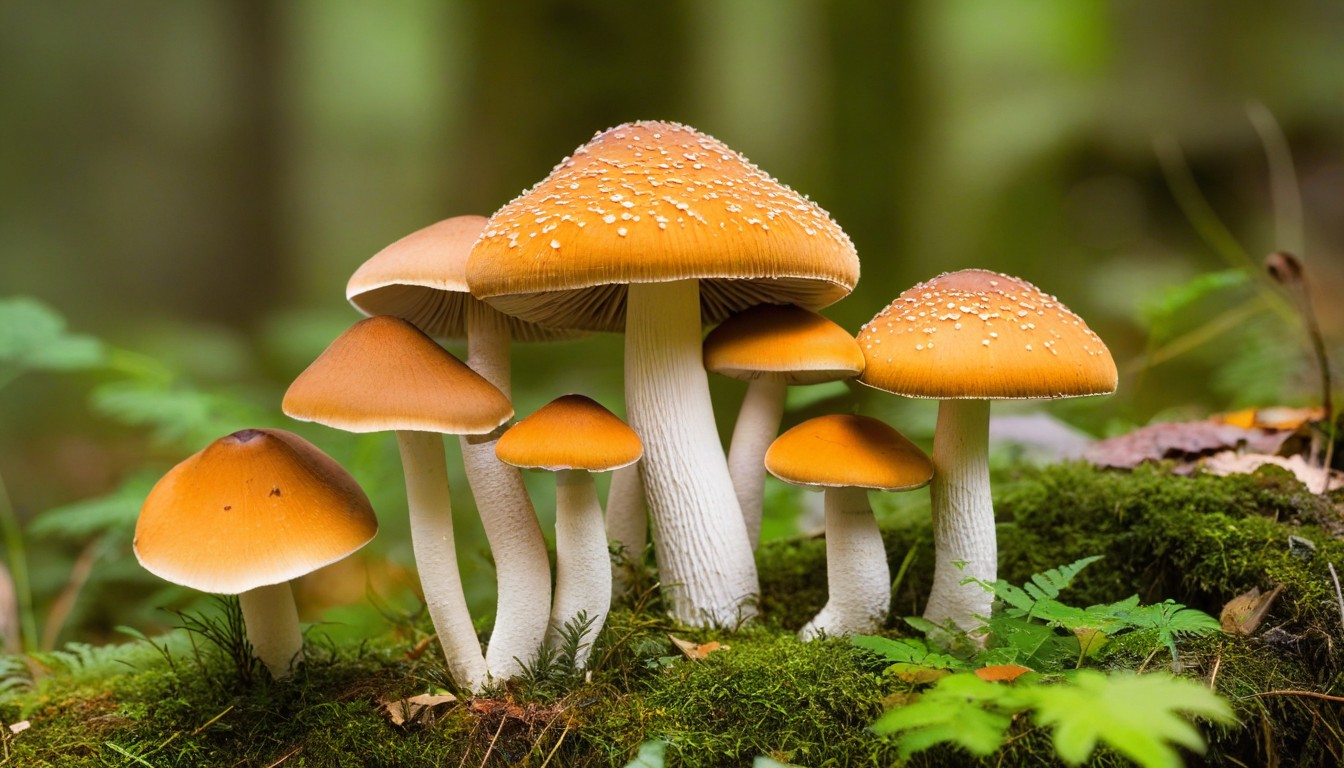
One of the most critical skills any mushroom forager should have is proper mushroom identification. While foraging for mushrooms is a rewarding and enjoyable experience, it can be dangerous without the correct knowledge. However, with the right resources, tips, and techniques, you can become a confident mushroom identifier.
Key Features for Mushroom Identification
When determining whether a mushroom is edible or poisonous, pay close attention to the following key features:
- Cap shape, texture, and color: Edible mushrooms typically have caps that are convex or flat with a smooth texture, while poisonous mushrooms may have caps with irregular shapes, slimy or scaly textures, and vivid colors that range from red to yellow.
- Gills and spores: Look at the gills and spores of a mushroom to help with identification. Edible mushroom gills are typically dry and white or light brown, while poisonous mushrooms may have soggy, dark, or rusty-colored gills. Spores may be black, brown, or white.
- Stem: Mushroom stems can also offer clues to their identity. Edible mushroom stems are typically central and smooth, while poisonous mushrooms may have off-center or bulbous stems.
While these are just a few of the key features to consider, a thorough understanding of each part of the mushroom is important to identify the correct species.
Resources for Mushroom Identification
There are many ways to improve your mushroom identification skills, including:
- Field guides: Mushroom identification books are a great resource to carry on your foraging trips and reference during identification. They include detailed descriptions, photos, and illustrations of each species, as well as information on poisonous look-alikes.
- Apps: If you prefer a digital option, mushroom identification apps are available for smartphones and tablets. These apps often include photos, descriptions, and maps of each species.
- Local foraging groups: Joining a local foraging group can connect you with experienced foragers who can share tips, answer questions, and help identify mushrooms.
With these resources and a keen eye for detail, you’ll soon be confidently identifying edible and delicious mushrooms on your next foraging adventure.
Hunting Morels in Ohio
If you’re a fan of mushrooms, then you’ve undoubtedly heard of morels. These prized fungi are highly sought after by mushroom foragers and chefs alike, thanks to their unique flavor and texture.
Ohio is home to a wide variety of morels, including the popular black, yellow, and white varieties. Hunting morels can be a challenging but rewarding experience, and there are a few tips and tricks you should keep in mind to improve your chances of success.
When to Hunt Morels
The timing of your morel hunt is crucial. These mushrooms typically start appearing in Ohio in late March or early April, when the weather starts to warm up and the ground begins to thaw. They can continue to grow into May, depending on the weather conditions.
One good strategy is to wait until the first warm, rainy day of spring and then head out to your favorite hunting spot. Morels love moist, warm conditions, and this is when they are most likely to pop up.
Where to Hunt Morels
Morels are elusive creatures, and finding them can be a bit of a challenge. However, there are a few locations in Ohio where they tend to flourish.
One common spot to look for morels is in the vicinity of dead or dying trees. Morels have a symbiotic relationship with these trees and often grow in their root systems. You can also try searching in areas with moist soil, like riverbanks or streambeds.
“The secret is to keep your eyes peeled, search thoroughly, and be patient,” says renowned Ohio chef and morel enthusiast, Henry Miller.
Identifying Morels
It’s important to properly identify morels before consuming them, as false morels can be toxic. True morels have a distinctive honeycomb-shaped cap and a hollow stem that is attached at the bottom of the cap.
If you’re unsure about your mushroom identification skills, consider attending a morel mushroom hunting workshop or consulting a local expert.
Cooking Morels
Once you’ve successfully hunted down some morels, it’s time to bring them to the kitchen. Morels have a rich, earthy flavor that pairs well with a wide variety of dishes.
One popular way to prepare morels is to sauté them with butter, garlic, and fresh herbs. They can also be roasted, grilled, or used in soups and stews.
For an extra-special treat, try using morels to make homemade mushroom risotto or a creamy morel sauce to serve over steak or fish.
Tips for Sustainable Mushroom Foraging
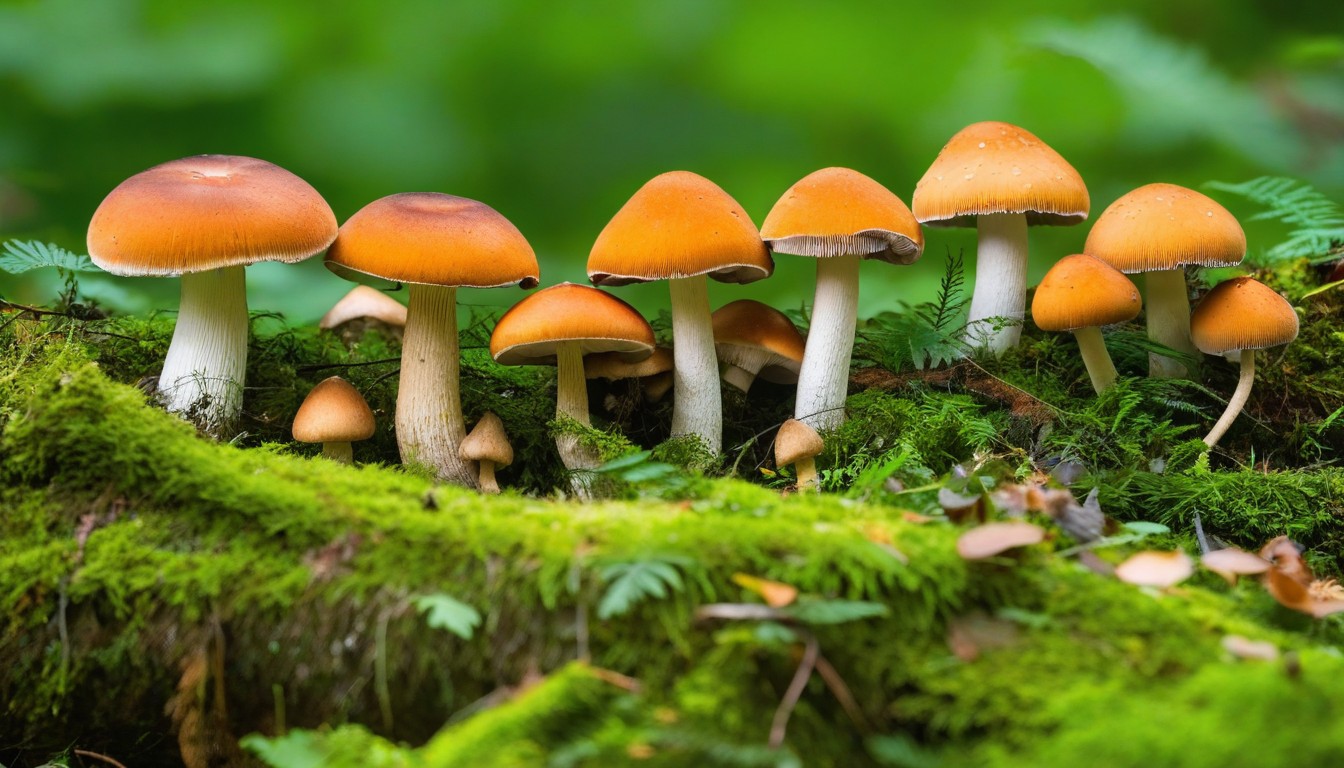
Foraging for mushrooms in Ohio can be a rewarding and enjoyable experience. However, it’s crucial to forage responsibly to preserve the delicate natural ecosystems of the state. Here are some tips and guidelines to ensure sustainable mushroom foraging:
- Harvest with care: When harvesting mushrooms, carefully cut or twist them from the stem to avoid damaging the surrounding area. Avoid picking more than you need, as this can disrupt the local ecosystem and impact future mushroom growth.
- Leave no trace: Be sure to leave the area you forage in as you found it. Take any trash or leftovers with you, and avoid damaging the ground or surrounding vegetation.
- Know your mushrooms: Properly identifying mushrooms is crucial for safe and responsible foraging. Take the time to learn the distinguishing features of edible and poisonous mushrooms, and avoid harvesting any species you’re unsure of.
- Forage legally: Always obtain proper permission from landowners before foraging on private property, and follow all state and national park regulations regarding mushroom foraging.
- Spread the word: Encourage others to forage sustainably, and educate fellow mushroom hunters on responsible foraging practices. By spreading awareness, we can protect Ohio’s natural resources for generations to come.
By following these tips and guidelines, you can enjoy sustainable mushroom foraging in Ohio while preserving the natural ecosystems of the state.
Delicious Mushroom Recipes
After a successful forage, it’s time to turn your edible fungi into a culinary feast. Here are some mouthwatering mushroom recipes that showcase the versatile and flavorful qualities of Ohio’s edible mushrooms:
1. Creamy Mushroom Soup
This hearty soup is the perfect cozy meal for a chilly day. Start by sautéing chopped onions and garlic in a pot, then adding sliced Ohio mushrooms and broth. Simmer until the mushrooms are tender, then puree the mixture until smooth. Finally, stir in heavy cream and fresh herbs, such as thyme or rosemary for an aromatic finish.
2. Mushroom Risotto
Risotto is a classic Italian dish that showcases the rich, earthy flavor of mushrooms. Cook Arborio rice with onion, garlic, and white wine, then ladle in simmering broth one cup at a time, stirring until the rice is plump and tender. Add sautéed Ohio mushrooms and grated Parmesan cheese for a savory finish.
3. Mushroom Pizza
Give your pizza a gourmet twist with Ohio mushrooms. Top a pre-baked crust with tomato sauce, mozzarella cheese, sliced mushrooms, and your choice of additional toppings, such as sausage or herbs. Bake until the cheese is melted and bubbly, then slice and serve for a deliciously satisfying meal.
4. Stuffed Mushrooms
These delightful appetizers are easy to make and always a crowd-pleaser. Clean Ohio mushrooms and remove the stems, then stuff the caps with a mixture of breadcrumbs, herbs, and cheese. Bake until golden brown and crispy for a tasty, bite-sized treat.
These are just a few of the many ways you can enjoy Ohio’s edible mushrooms. Get creative and experiment with your own recipes to truly savor the flavors of nature’s bounty!
Mushroom Identification Resources in Ohio
Foragers of all levels can benefit from additional resources to enhance their mushroom identification skills. Fortunately, there are plenty of resources available in Ohio to aid you in identifying mushrooms.
Books
Books are a great resource to supplement your identification skills. Some of the best books on mushroom identification include:
- Mushrooms of the Midwest by Michael Kuo and Andrew S. Methven
- Edible Wild Mushrooms of North America: A Field-To-Kitchen Guide by David W. Fischer and Alan E. Bessette
- Mushrooms of Northeast North America: Midwest to New England by George Barron
Websites
Several websites can aid you in mushroom identification. Some of the best include:
- MushroomExpert.com
- MykoWeb.com
- Mushroom Appreciation
Organizations
Joining a mycological society is an excellent way to make connections with fellow mushroom enthusiasts and increase your mushroom identification skills. Some of the organizations based in Ohio include:
Organization | Location | Contact Information |
|---|---|---|
Ohio Mushroom Society | Statewide | ohiomushroom.org |
Central Ohio Mushroom Society | Columbus | facebook.com/CentralOhioMushroomSociety/ |
Cincinnati Mushroom Society | Cincinnati | facebook.com/CincinnatiMushroomSociety/ |
By utilizing these resources, you’ll be on your way to becoming a skilled mushroom identifier and a successful forager in no time.
Conclusion
Foraging for edible mushrooms in Ohio is not only a rewarding experience, but it also provides an opportunity to connect with the natural world and appreciate the beauty of our environment. By following the safety precautions, properly identifying mushrooms, and seeking out sustainable foraging practices, you can enjoy the delicious flavors and benefits of Ohio’s edible fungi. Remember to always respect the natural habitats and leave no trace behind.
With a little practice and knowledge, you too can become a successful mushroom forager in Ohio. So, grab your basket and venture out into the majestic forests and fertile fields of the Buckeye State. With this comprehensive guide and your newfound expertise, the possibilities for culinary creativity and outdoor adventure are endless.
Happy foraging!
FAQ
Why should I forage for mushrooms in Ohio?
Foraging for mushrooms in Ohio allows you to explore the rich diversity of ecosystems that the state has to offer. With fertile soil in the Ohio River Valley and lush forests in the Appalachian region, Ohio provides the perfect habitat for a variety of edible mushrooms.
What safety precautions should I take when mushroom foraging?
Safety is paramount when it comes to mushroom foraging. Before heading out, make sure to familiarize yourself with the potential risks and basic safety guidelines. It’s also essential to carry the necessary tools such as a mushroom knife, gloves, and a field guide to properly identify mushrooms.
Can you recommend some common edible mushrooms in Ohio?
Ohio is home to several common edible mushrooms. Some examples include morels, chanterelles, chicken of the woods, oyster mushrooms, and maitake mushrooms. These mushrooms offer delicious flavors and can be found in various habitats across the state.
Where can I find edible mushrooms in Ohio?
There are numerous locations in Ohio where you can find edible mushrooms. State parks, nature preserves, and wooded areas are great places to start your foraging adventure. Some popular spots include Hocking Hills State Park, Wayne National Forest, and Cuyahoga Valley National Park.
How can I properly identify mushrooms?
Proper identification is crucial for safe foraging. Learning to identify mushrooms takes time and practice, but there are key features to look for. Pay attention to characteristics such as color, shape, texture, and spore print. Utilize resources such as field guides, online forums, and local mycological organizations for assistance.
What are some tips for hunting morels in Ohio?
Ohio is renowned for its morel mushrooms. These prized fungi often emerge in early spring and can be found in forest areas with decaying organic matter. Pay close attention to tree species, weather conditions, and moist soil. Morels have a distinct appearance with their cone-shaped caps and hollow stems.
How can I forage for mushrooms sustainably?
Sustainable mushroom foraging is important to preserve natural ecosystems. Follow guidelines such as only harvesting mature mushrooms, leaving some behind to aid in reproduction. Avoid damaging the mycelium network and sensitive habitats. Be respectful of plants, wildlife, and other foragers in the area.
What are some delicious mushroom recipes?
Once you’ve foraged for edible mushrooms, there are numerous recipes you can try. From hearty mushroom risotto to savory mushroom tarts and creamy mushroom soups, the possibilities are endless. Experiment with different cooking techniques and flavors to fully enjoy the taste of Ohio’s edible fungi.
Are there any resources to help with mushroom identification in Ohio?
Yes, there are several resources available to assist with mushroom identification in Ohio. Local mycological organizations can provide support and offer workshops or forays. Books such as “Mushrooms of the Midwest” by Michael Kuo and websites like the Ohio Mushroom Society can also be valuable references.

